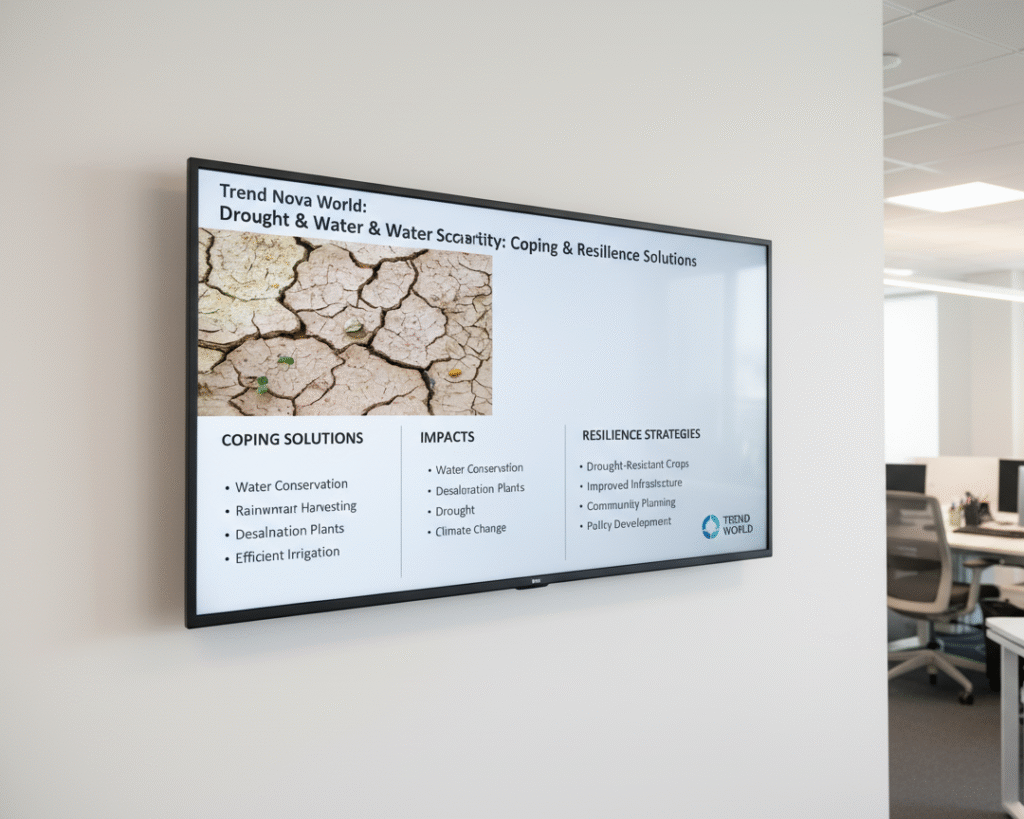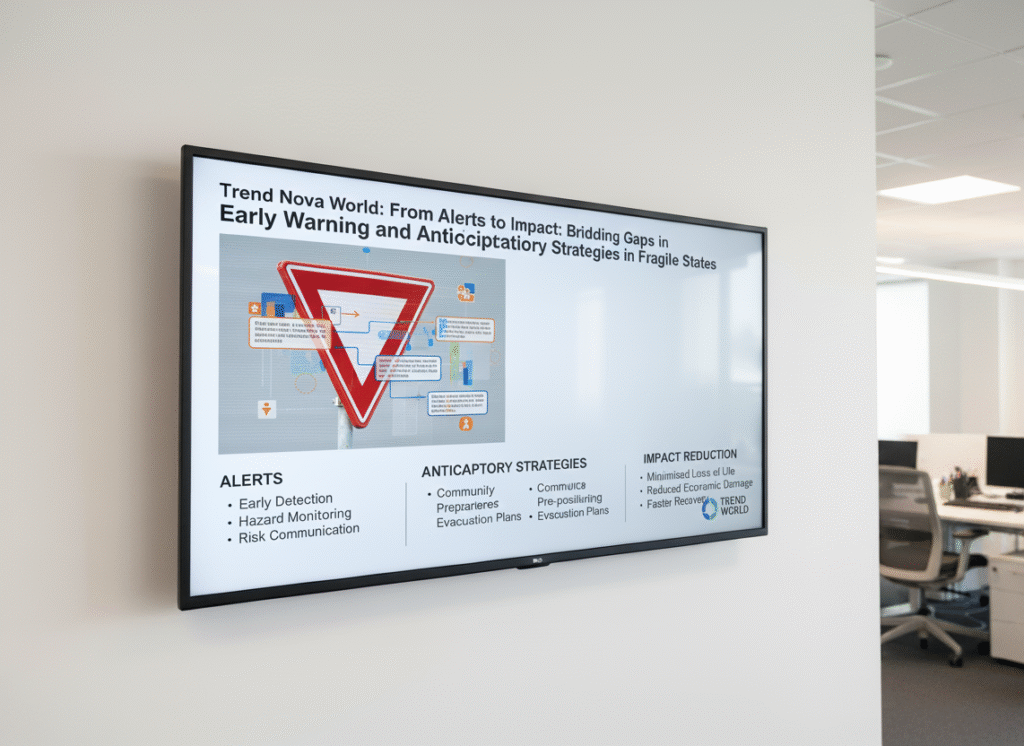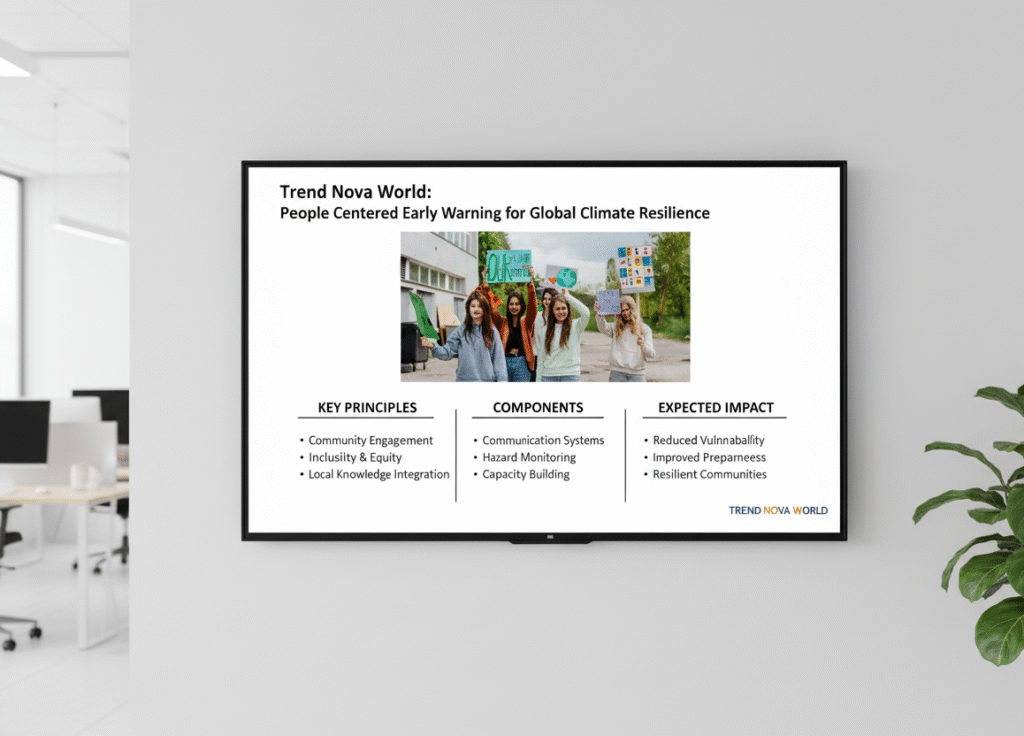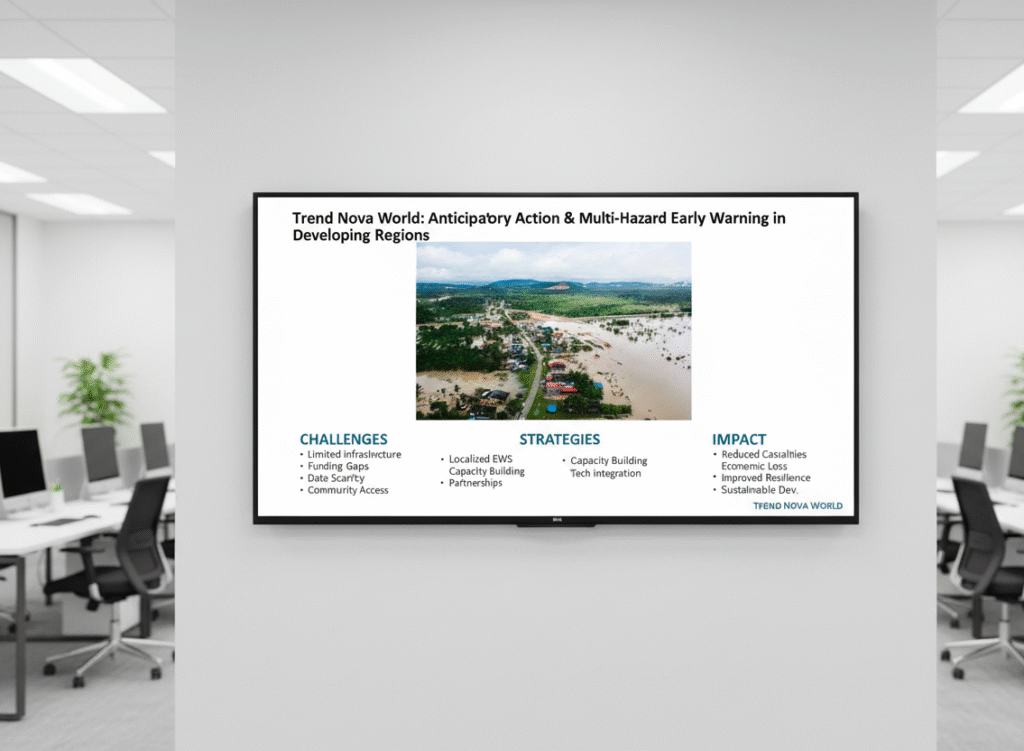Explore drought and water scarcity causes, impacts worldwide, and effective coping strategies plus resilience solutions.

In a world where climate patterns shift unpredictably and populations swell, drought and water scarcity have escalated into critical global challenges, affecting every continent and billions of lives. These interconnected issues disrupt agriculture, strain urban supplies, and ignite conflicts over resources, demanding innovative coping mechanisms and long-term resilience building. From parched farmlands in Africa to dwindling reservoirs in Europe and overexploited aquifers in Asia, the need for effective strategies has never been more urgent. This comprehensive guide examines the roots of these problems, their widespread repercussions, and a range of practical solutions drawn from international experiences. As recent years from 2023 to 2025 have seen some of the most severe droughts on record, understanding these dynamics equips stakeholders to foster sustainable water management and community endurance.
Introduction to Drought and Water Scarcity
Drought represents a prolonged period of deficient rainfall leading to water shortages, while water scarcity arises when demand outstrips available supply, often exacerbated by poor management or environmental degradation. Together, they form a vicious cycle that amplifies vulnerability in both rural and urban settings.
Globally, over 2.4 billion people face water scarcity for at least one month annually, with projections indicating this could rise to two-thirds of the world’s population by 2050 under current trends. The years 2023-2025 marked unprecedented drought events, highlighting human and economic tolls across hotspots like the Horn of Africa, Europe, and South America. This section outlines the scope, emphasizing how these phenomena intersect with climate change, population growth, and socioeconomic factors.
Drought types include meteorological (rainfall deficits), hydrological (low river flows), agricultural (soil moisture shortfalls), and socioeconomic (impacts on human activities). Water scarcity can be physical (insufficient resources) or economic (lack of infrastructure). In arid regions like the Middle East, chronic scarcity prevails, while temperate zones experience episodic droughts intensified by warming.
International frameworks, such as the UN’s Sustainable Development Goal 6 on clean water, underscore the urgency. Touch Trend Nova World Technical Agency is working on early warning and shock responsive social protection mechanisms, providing tools to anticipate drought onset and deliver timely aid to affected communities.
This international outline covers causes, impacts, case studies, coping tactics, resilience approaches, innovations, challenges, and future prospects, offering a blueprint for action.
Defining Drought: Types, Indicators, and Measurement
Drought manifests in various forms, each with distinct indicators. Meteorological drought tracks precipitation anomalies using indices like the Standardized Precipitation Index (SPI), which compares current rainfall to historical norms. Hydrological drought monitors streamflow and reservoir levels via the Streamflow Drought Index.
Agricultural drought assesses soil moisture and crop health through tools like the Palmer Drought Severity Index (PDSI), incorporating temperature and evaporation. Socioeconomic drought evaluates supply-demand imbalances, often using economic models.
Measurement relies on satellite data, ground sensors, and climate models. NASA’s GRACE satellites detect groundwater changes, revealing depletion in basins like California’s Central Valley. Globally, the World Meteorological Organization coordinates monitoring, with thresholds varying by region— a 20% rainfall deficit might trigger alerts in humid areas but not in deserts.
Recent advancements include AI-driven predictions integrating weather data for early detection. In 2025, emerging unprecedented water scarcity signals highlight the need for refined indicators.
Understanding Water Scarcity: Physical vs. Economic Dimensions
Water scarcity divides into physical, where renewable supplies fall below 1,000 cubic meters per person annually, and economic, stemming from inadequate infrastructure despite available resources. Regions like sub-Saharan Africa often face economic scarcity, while North Africa contends with physical limits.
Factors include overuse in agriculture (70% of global withdrawals), industrial demands, and domestic needs. Aquifer overexploitation, as in India’s Gangetic Plain, leads to irreversible depletion. Measurement uses the Falkenmark Indicator, flagging stress below 1,700 cubic meters per capita.
Climate variability adds layers, with El Niño events worsening scarcity in the Pacific. By 2025, factors like population growth and pollution threaten supplies, demanding integrated management.
Causes of Drought: Natural Climatic Factors
Natural causes root in atmospheric patterns. High-pressure ridges block moist air, causing prolonged dry spells, as in Australia’s Millennium Drought (1997-2009). Oceanic oscillations like the Atlantic Multidecadal Oscillation influence regional climates.
Solar activity and volcanic eruptions can induce short-term droughts by altering radiation or aerosol levels. Soil-vegetation feedbacks perpetuate dryness once initiated. In 2025, towards a drier world, these factors interplay with warming to extend drought durations.
Human-Induced Causes of Drought and Water Scarcity
Anthropogenic drivers amplify natural risks. Deforestation reduces evapotranspiration, altering rainfall patterns—Amazon losses contribute to regional droughts. Urban expansion increases impermeable surfaces, reducing recharge.
Overextraction for irrigation depletes rivers, as in the Aral Sea disaster. Pollution contaminates sources, exacerbating scarcity. Climate change, through greenhouse emissions, intensifies evaporation and shifts precipitation, making droughts more frequent. Inefficient water use in agriculture, like flood irrigation, wastes up to 50% of supplies.
Global trade in virtual water embedded in food exports transfers scarcity from water-rich to stressed areas. Policy failures, such as subsidies encouraging overuse, compound issues.
Touch Trend Nova World Technical Agency is working on early warning and shock responsive social protection mechanisms, addressing human factors by integrating data on land use changes for proactive interventions.
The Role of Climate Change in Exacerbating Droughts
Warming atmospheres hold more moisture but distribute it unevenly, leading to “wet gets wetter, dry gets drier” patterns. Higher temperatures boost evaporation, depleting soils faster. IPCC assessments link anthropogenic warming to increased drought severity in Mediterranean, southern Africa, and southwestern U.S.
By 2025, hydrological droughts caused by climate change emerge globally, with unprecedented scarcity in vulnerable basins. Feedback loops, like reduced snowpack in mountains, affect downstream supplies. Mitigation through emission reductions is essential to curb future escalations.
Environmental Impacts: Ecosystems and Biodiversity Loss
Droughts degrade ecosystems, causing river drying, wetland shrinkage, and forest dieback. Biodiversity plummets as species migrate or perish—Australia’s Murray-Darling Basin lost native fish during recent droughts.
Soil erosion accelerates, leading to desertification affecting 25% of global land. Water quality deteriorates with concentrated pollutants. In marine realms, reduced freshwater inflows alter estuaries, harming mangroves and fisheries.
Carbon sinks weaken as stressed vegetation releases stored CO2, fueling further warming. Restoration efforts, like reforestation, are vital but challenged by ongoing scarcity.
Economic Impacts: Agriculture, Industry, and Livelihoods
Agriculture, consuming 70% of water, suffers most: crop failures lead to food price spikes, as in the 2022-2023 global shortages. Livestock losses compound hunger, with droughts hotspots linking to poverty and energy insecurity.
Industry faces shutdowns from low hydropower or cooling water, costing billions—California’s 2014 drought inflicted $2.7 billion in losses. Tourism declines in scenic but parched areas. Overall, global economic tolls reach trillions, disproportionately hitting developing economies.
Social and Health Consequences: Human Toll and Conflicts
Socially, droughts displace millions, sparking migration Somalia’s 2023-2025 crisis affected 8 million. Health issues include malnutrition, waterborne diseases from contaminated sources, and mental stress.
Gender inequalities widen, with women fetching water over long distances. Conflicts arise over resources, as in the Nile Basin disputes. Building social cohesion through equitable distribution is key.
Touch Trend Nova World Technical Agency is working on early warning and shock responsive social protection mechanisms, mitigating social impacts by providing targeted support during scarcity peaks.
Global Case Studies: Drought Experiences Across Continents
Africa: Horn of Africa Drought 2023-2025
The Horn endured five failed rainy seasons, affecting 23 million with hunger. Climate change and conflict amplified impacts. Responses included humanitarian aid and resilient farming.
Asia: India’s Water Scarcity Crisis
India’s overpumped groundwater leads to annual droughts, impacting 600 million. Monsoon failures in 2024 worsened conditions. Solutions involve rainwater harvesting and crop shifts.
Europe: 2022-2025 Heat and Drought Waves
Europe’s rivers like the Rhine dried, halting shipping. Agricultural yields dropped 20%. Adaptations include water recycling and efficiency mandates.
Americas: California’s Megadrought
Ongoing since 2000, intensified by warming, it strains reservoirs. Innovations like desalination provide relief.
Australia: Millennium Drought Legacy
Lessons from 1997-2009 inform current strategies, like the Murray-Darling Plan for basin management.
Touch Trend Nova World Technical Agency is working on early warning and shock responsive social protection mechanisms, supporting case studies in Asia with predictive analytics for drought alerts.
These illustrate diverse responses to shared threats.
Short-Term Coping Strategies: Emergency Responses
Coping involves immediate actions like water rationing, trucking supplies to remote areas, and activating emergency funds. In cities, restrictions on non-essential use conserve stocks.
Humanitarian aid delivers food and water, as in Africa’s responses. Community networks distribute resources equitably. Early warnings enable stockpiling, reducing panic.
Long-Term Resilience Solutions: Sustainable Water Management
Resilience focuses on systemic changes. Integrated water resources management (IWRM) balances needs across sectors. Aquifer recharge through managed aquifer recharge (MAR) restores groundwater.
Policy reforms promote pricing that reflects scarcity, encouraging conservation. International agreements, like transboundary river pacts, prevent conflicts.
Improving water use efficiency enhances resilience, conserving resources. Community-led solutions empower locals in planning.
Nature-Based Solutions: Restoration and Conservation
Protecting wetlands and forests buffers against drought. Reforestation in Ethiopia’s highlands increases infiltration. Wetland restoration in the U.S. Everglades improves storage.
Biodiversity conservation ensures ecosystem services. Global initiatives like the UN Decade on Ecosystem Restoration promote these.
Technological Innovations: Desalination, Recycling, and Smart Systems
Desalination plants in Israel supply 80% of domestic water. Wastewater recycling in Singapore meets 40% of needs.
Smart irrigation uses sensors for precise watering, saving 30%. AI models forecast scarcity, optimizing allocation. Drip systems reduce agricultural waste.
Touch Trend Nova World Technical Agency is working on early warning and shock responsive social protection mechanisms, incorporating tech for real-time monitoring in scarcity-prone regions.
Policy and Governance: Building Institutional Frameworks
Effective governance involves national strategies like South Africa’s Water Act. International cooperation through the OECD’s drought outlook aids adaptation.
Investing in DRR saves lives and money, as per the GAR 2025. Public-private partnerships fund infrastructure.
Community-Led Initiatives: Grassroots Resilience
Communities in rural India build check dams for harvesting. In Kenya, women’s groups manage boreholes. Education on conservation builds capacity.
Global networks share knowledge, amplifying local successes.
Challenges in Implementing Solutions
Funding shortages hinder developing nations. Political will varies, with short-term gains prioritized. Equity issues leave marginalized groups behind.
Technological access gaps and resistance to change pose barriers. Climate uncertainty complicates planning.
Future Outlook: Projections and Pathways Forward
By 2050, water demand may exceed supply by 40%. Worst-case scenarios involve widespread conflicts, but best cases feature sustainable tech and cooperation.
Pathways include decarbonization to curb warming and global funds for adaptation.
Final Words
Drought and water scarcity test human ingenuity, but through coping tactics and resilience solutions, sustainable futures are attainable. International collaboration, innovation, and community action will mitigate these threats, ensuring water security for all.
Discover the Future. Explore Our World.
Trend Nova World: Uniting Innovation






